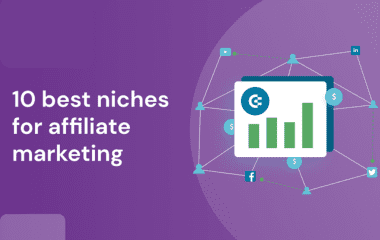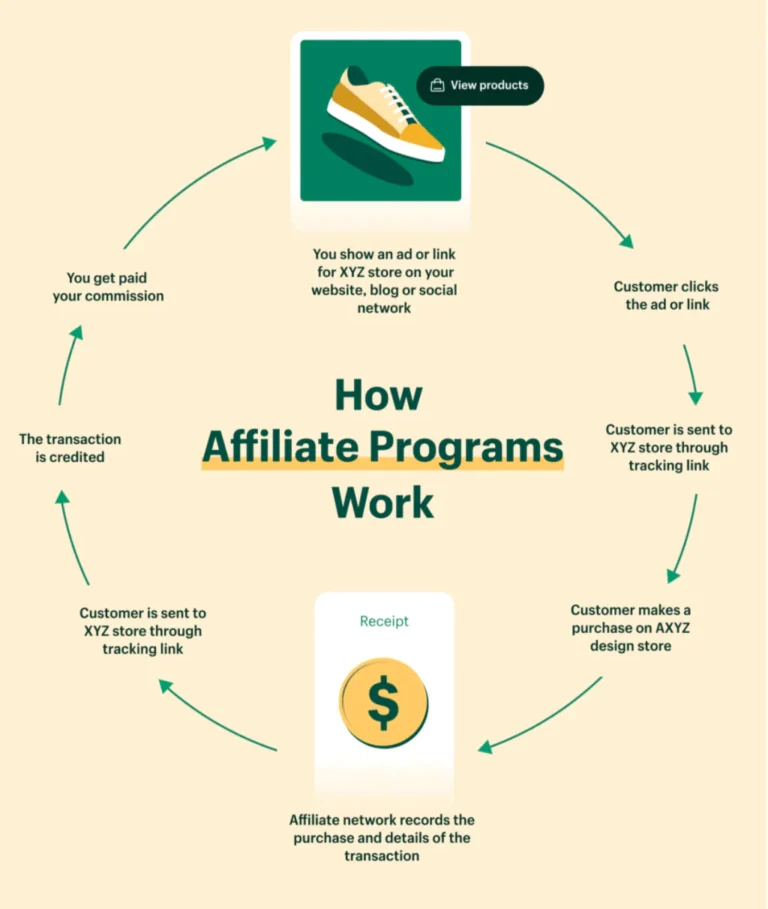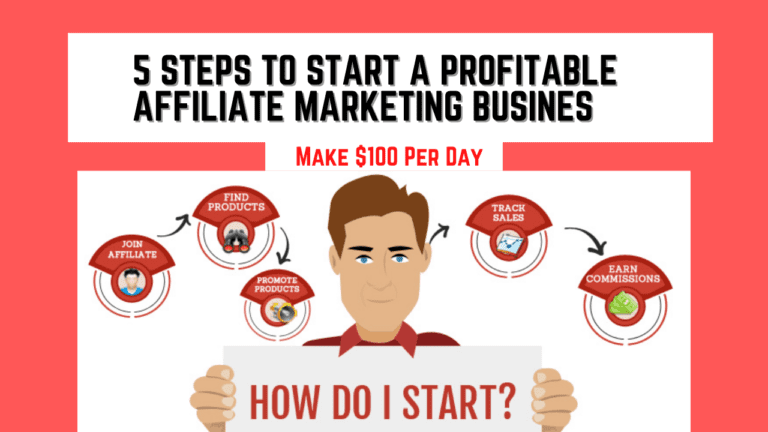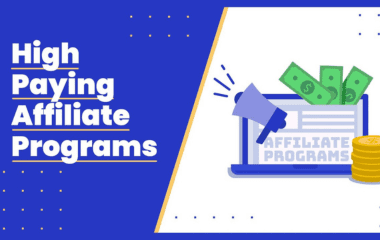The 5 Best Ad Networks For Content Creators In 2024 (Updated)
5 Best Ad Networks …… But that doesn’t mean it’s easy.
Content creators – whether they’re bloggers, videographers, photographers, or some other kind of creative – are constantly on the hunt for new and effective ways to monetize their work within a volatile digital landscape.
Display ad networks are a tried-and-tested method to do just that – and choosing the right one can help publishers maximize their earnings while delivering a great user experience.
In this article, we’ll explore the best ad networks for content creators in 2024, giving you the tools to monetize your content effectively.
What Is An Ad Network?
Let’s start, as always, with the basics: What is an ad network?
An ad network is a platform that acts as a middleman between publishers (i.e., bloggers, content creators, etc.) who want to sell ad space on their websites or platforms and advertisers looking to purchase ad placements.
Ad networks serve as a bridge to help advertisers find ad placements on websites that align with their target consumers and goals – and vice versa. They help publishers connect with advertisers whose ads align with their own content and audience.
For bloggers and content creators, ad networks provide an opportunity to make money from their content without having to negotiate directly with advertisers.
As opposed to using sponsored posts or affiliate marketing deals, ad networks represent a more automated, hands-off option that removes a lot of manual work – saving creators time and stress.
Here’s how ad networks typically function, though this can differ depending on the type of ad network you decide to work with.
- The publisher joins the network – This is the first step and usually requires you to submit your content or site for review. Often, ad networks will have a minimum traffic requirement for you to join. Once the network has assessed whether your content fits its criteria (e.g., content quality, niche, traffic, etc.), it will make a decision on whether to approve you.
- Ad placement – Once you’ve been approved, you’ll the process of getting ads placed on your site. This process will differ depending on which network you use. Sometimes, it’s as simple as getting a code snippet that you then embed on your site. Other times, you will share your available inventory and have advertisers send you bids for placements. The ultimate outcome is that the ad network will enable you to place ads on your site or content that resonate with your audience and drive clicks and impressions.
- Earnings generations – Advertisers pay the ad network to serve their ads, and when users see those ads on your site and click or view them, you earn money. How much money you earn depends on how the network pays.
- Payment – The ad network then pays you your earnings through whatever method you choose. Sometimes, they’ll take a commission, which will vary depending on the network.
What Are The Different Types Of Ad Networks?
While the types of ad networks out there are always evolving and changing, here are some of the different types you might come across.
Vertical Networks
These are networks that specialize in specific niches or industries. Their purpose is to help advertisers in the said industry reach a highly targeted audience.
For example, you might find a vertical network that only serves ads related to ecommerce or finance, and this would be a good fit for a creator whose content aligns with those topics.
Premium Networks
These are networks that emphasize high-quality ad content. They’ll often work with first-rate publishers and creators, or websites that generate a ton of traffic. Why? Because some advertisers are more likely to spend the big bucks to place their ads on sought-after sites.
Specialized Or Inventory-Specific Networks
Sound a lot like vertical networks? That’s because they are.
The main differentiator here is that specialized networks can be focused on the type of content rather than the industry. Think: A video-specific network or one that only serves ads within podcasts.
Targeted Networks
Advertisers that want to reach a hyper-specific demographic or segment or users might leverage a targeted network. They focus on very particular targeting based on a range of criteria, like location, user behavior, etc.
Performance And Affiliate Ad Networks
These networks are more concerned with user actions than just displaying ads.
In these cases, advertisers will pay publishers when the user takes a specific action on their advertising content – whether that’s signing up, registering for something, making a purchase, etc. This goes for affiliate ad networks, too, where creators make commissions for purchases made using their affiliate links.
5 Best Ad Networks For Content Creators In 2024
1. Google AdSense

If you’re just getting started in the world of ad monetization, Google AdSense is a great pick. Owned by Google, it’s one of the most popular ad networks thanks to its ease of use – hence why it’s a great choice for beginners.
There’s no minimum traffic requirement, and the self-service platform is free to join.
Once you’re approved, you can start displaying ads by just embedding a snippet of code into your site. The Auto Ads feature makes it extremely easy to automatically place ads on your website or switch them off for specific pages.
Google AdSense offers a bunch of different ad formats, including display, text, in-feed, and in-article ads, and personalization options like contextual and behavioral targeting.
But the platform also has its challenges. Getting approved is not always easy due to Google’s strict policies and guidelines – and even once approved, you risk account suspension for any violations.
In order to withdraw your earnings, you need to earn at least $100. And while you can earn some decent money from AdSense, the revenue potential isn’t as promising as some other platforms.
Revenue share: 68% to site owners / 32% to Google AdSense.
Payment model: CPC.
Traffic requirements: None.
Key features:
- Responsive ads – With AdSense, your ad units can be automatically sized to fit the user’s device, ensuring a great user experience.
- Insights and analytics – Detailed performance reports help you get information on how your ads are performing so that you can optimize your placements. Metrics you can track include views, clicks, revenue, and more.
- Ad review center – Control what ads appear on your site with the ability to review and then approve or deny specific ad categories.
2. Media.net

If you’re looking for an alternative to Google AdSense, look no further than Media.net. It’s powered by Yahoo! and Bing, providing an impressive pool of advertisers and making it a great choice to supplement your AdSense efforts.
Media.net is best known for its focus on contextual ads. This means that rather than serving ads to your audience based on their interests, it displays ads that are closely related to the content on your page – which is believed to increase user engagement and clickthrough rates (CTRs).
For example, if your blog post is about beautiful beaches, Media.net might serve your users ads about beach towels.
Similar to AdSense, Media.net is free and has no traffic requirement to join. It offers an expansive inventory of ads, and its ads are optimized for viewing on mobile devices.
Media.net also assists publishers and creators via dedicated account managers who can help you with setup, issue troubleshooting, and optimization tips, giving it a significant edge over many other platforms.
Downsides to be aware of are a somewhat challenging approval process, a learning curve, a minimum payout threshold of $100, and the fact that payment options are limited to Payoneer or wire transfer.
It’s also worth noting that Media.net tends to perform best for sites in specific niches such as health, tech, and finance. If your site is outside of these niches, you may experience lower earnings than on other platforms.
Revenue share: Undisclosed.
Payment model: CPC, CPM.
Traffic requirements: None.
Key features:
- Dynamic optimization – In order to get the most bang for your impressions, Media.net will optimize between the ad types that it believes will perform best with your audience.
- Sizeless ads – Media.net allows publishers to create ads with totally custom sizes and designs if they’d like in order to fit their site.
- “Sticky” ads – The platform offers ads that stick to the screen as your users scroll – or in-content ads that are displayed automatically within your content – to improve viewability.
3. Raptive (Formerly AdThrive)

Raptive, formerly known as AdThrive, is thought to be one of the most sought-after ad networks for content creators, especially those who operate in the travel, lifestyle, food, and parenting niches.
It has a reputation for driving impressive revenue growth for websites by optimizing ad placements and performance. It also has a reputation for putting publishers first, so creators will get paid regardless of whether Raptive is paid by its advertisers.
Other pros of Raptive include a dedicated support team to help creators, flexible payment options, personalized recommendations for your site, the ability to host and monetize video content, and a user-friendly dashboard that provides insights into your earnings and impressions.
But as with all things, there are also some drawbacks.
First and foremost, Raptive has a high barrier to entry; you need to have at least 100,000 pageviews in order to qualify for its minimum traffic requirements. This can be challenging for new or smaller creators.
Additionally, it primarily caters to English content, and you need to have a majority of your traffic come from the US, CA, UK, AU, or NZ. There are some reports that Raptive can have a high ad density (i.e., serve a lot of ad placements), and you will need to consider this aspect of your user’s experience.
Revenue share: 75% to site owners / 25% to AdThrive.
Payment model: CPC.
Traffic requirements: 100,000 pageviews per month.
Key features:
- Auto ad placement – Ads will be automatically placed in the positions where they will perform best by Raptive’s algorithms.
- Experimentation – Creators can test out a variety of different ad types and placements with Raptive’s customizable A/B ad testing.
- Learning resources – Raptive offers a selection of expert webinars, tutorials, and articles to help creators boost their earnings.
4. Adcash

Adcash is a self-serve ad network catering to both creators and advertisers serving a global audience.
It’s known for its vast range of traffic sources and ad formats, which include options like pop-under, native ads, interstitials, display ads, banners, push notifications, and more.
Its global approach means content creators can reach users in more than 196 countries – and this flexibility is worth noting.
Additional pros of Adcash include access to real-time performance reporting, optimization tools, and – perhaps most interestingly – its anti-adblock technology, which allows creators to continue generating revenue from website visitors who are using ad-blocking tools.
Adcash offers multiple payment options and is fairly easy to set up and get started with.
Potential drawbacks of Adcash include a possible negative impact on the user experience from some ad formats (such as interstitials or pop-unders), a minimum payment threshold of $25 USD/EUR, and lower CPM rates than the market average.
Revenue share: Undisclosed.
Payment model: CPC, CPM, CPA, RevShare, dynamic CPM.
Traffic requirements: None.
Key features:
- Anti-Adblock technology – The ability to show ads to users, even if they’re using an ad-block tool.
- High fill rate – Consistently high fill rates mean you can monetize more impressions.
- Live reporting – The Publisher Platform Reports section in Adcash helps you track revenue as it rolls in.
5. Amazon Publisher Services

Amazon Publisher Services equips publishers and content creators with a suite of tools to help them manage their ad inventories and monetize their content.
It offers access to Amazon’s massive advertising ecosystem and its cloud-based solutions like transparent ad marketplace, unified ad marketplace, and shopping insights – not to mention publishers can tap into Amazon’s high ad demand.
On the downside, Amazon Publisher Services is more limited to bigger creators with high website traffic, as it requires a minimum of 5,000 unique website visits daily. It can also be intimidating for newcomers, as it’s more complex than some networks, and implementing it can take time and technical knowledge.
Revenue share: Undisclosed.
Payment model: CPM.
Traffic requirements: 5,000 unique daily visits.
Key features:
- Transparent ad marketplace (TAM) – Amazon’s server-side header bidding solution takes a cloud-based approach, which improves speed and efficiency.
- Unified ad marketplace (UAM) – Enables creators to manage multiple demand partners and get the best bids for their inventory by consolidating demand across sources.
- Shopping insights – A unique feature highlighting data based on shopping behaviors so publishers can optimize their delivery strategies.
In Summary
For content creators, bloggers, and publishers, choosing the right ad network can be a challenging task.
From understanding the nuances, pros, and cons of each platform to deciphering their various payment models and methods, there’s a lot to consider.
The key, though, is to make sure the platform(s) you choose to align with your content goals and values.
You should know what matters most to you going into it – whether it’s the quality of ads, user experience, or payout frequency – and make sure that it is reflected and prioritized in the ad network you choose.
Whether you’re a brand new blogger taking the first steps to monetize your content or a seasoned creator reevaluating your revenue strategy, we hope this guide can help you make informed decisions and maximize your earnings.





